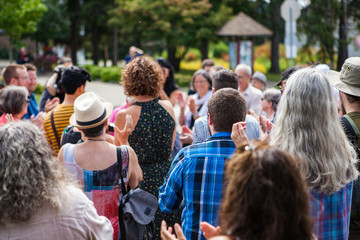A house Cleaner Near Me is someone who performs routine cleaning services for a household. They typically come once a week or biweekly to clean different areas of the house. They may also do the laundry and restock cupboards.

Some people treat their cleaning technicians like family members. Others have a more professional relationship with them.
A punctual house cleaner is a professional who respects your time. They arrive at the agreed-upon time, complete their cleaning tasks promptly, and leave your home pristine. They also work around your schedule, ensuring that their services are available when you need them most.
A good house cleaner will communicate clearly with you about your expectations and what cleaning tasks they are capable of. They are familiar with standard cleaning checklists, including scrubbing kitchen appliances, vacuuming and mopping floors, and removing soap scum from bathroom surfaces. They will discuss your home’s specific needs and provide you with a quote for their services.
They will also be mindful of your privacy. They will not intrude on personal spaces unless specifically instructed to do so, and they will keep you updated about the progress of their work. A good house cleaner will also not use your cleaning products if they don’t have permission to do so.
You can help them by keeping your home clean before they arrive. Clearing away clutter, putting items in their proper places, and securing any delicate or valuable items will make the job easier for them. It’s also helpful to have open lines of communication, so you can discuss any questions or concerns with them.
During the first meeting, you should establish your expectations and set up a regular cleaning schedule. This way, you can trust your house cleaner to do the job right and save you time and money. You should also specify any special requirements, such as scrubbing hard-to-reach areas or steam-cleaning upholstery.
While you may want to express your concerns about the cleaning job, it is important to do so respectfully. Attempting to haggle over the price after the service is completed can strain your relationship and be seen as unprofessional. Instead, you should address your concerns during the initial meeting or via open communication channels. Also, remember to thank your cleaner for their hard work and effort. This will make them feel valued and appreciated. It will also inspire them to continue to perform exceptional work.
Detail-oriented
When it comes to cleaning the house, a next-level professional will take the time to ensure each area has been thoroughly cleaned. For instance, they will clean the baseboards and light switches to ensure they are sanitized and spotless. They will also list all cleaning solutions used, so clients can be aware of any allergens or risks.
A detail-oriented cleaner will be able to identify small areas that often get overlooked, such as dust and dirt in the corners or under furniture. They will also be observant of subtle signs of wear and tear or early mold growth, so they can address them before they become more problematic. They will also be able to prioritize tasks and create a structured maintenance schedule that ensures your home stays hygienic at all times. We call this our innovative Detail-Clean Rotation System, and it involves two initial deep cleans of different zones in your home to prevent grime build-up over time.
Experienced
A skilled house cleaner is like a productivity ninja, working smart and efficiently to get the job done. They have a knack for juggling tasks, prioritizing them based on urgency and difficulty and always aiming to beat their client’s expectations. They are also flexible, adapting on the fly to any curveballs that come their way without compromising quality. For example, if you have a stubborn carpet stain that won’t budge, a pro cleaner would try out different cleaning solutions until they find one that works without harming your fabrics and surfaces.
Trained cleaners have a thorough understanding of cleaning methods, products and equipment, allowing them to tackle the toughest of jobs with ease. They are also familiar with your home’s layout and have good spatial perception, enabling them to spot trouble spots even when you’re not there. Additionally, professional cleaners use high-quality cleaning products that are like superheroes against stubborn stains, grime and germs, keeping your furniture and surfaces looking their best.
Clear communication with your house cleaners is essential to ensuring that they understand your expectations and preferences. This allows you to discuss specific requests in detail and achieve top-notch results every time. For instance, if you have sensitive skin or are allergic to certain chemical cleaning products, you can let your cleaners know so they bring only eco-friendly formulas when coming to your place.
You can also express your gratitude and support for your cleaners by offering them breaks, snacks, beverages, and fair pay. This helps keep them motivated to deliver great service, which in turn, keeps your home clean and hygienic all the time. It’s also important to offer feedback politely if you have any issues with your cleaners’ performance.
Flexible
A house cleaner is a professional who specializes in cleaning houses and may work for a cleaning service or an independent contractor. A cleaner can perform a variety of tasks, including scrubbing kitchen fixtures, vacuuming and mopping floors, and steam-cleaning upholstery. They can also remove grease, mineral deposits and soap scum from various surfaces. They often perform deep cleaning services before special events, such as a dinner party or birthday.
Flexibility is essential when hiring a house cleaner. It can make all the difference in ensuring that you and your cleaner get along well. This is especially important if you have kids or pets, who might distract the cleaner from the task at hand. Make sure you are flexible about the times when you want your cleaner to come, so that they can accommodate you.
Another aspect of flexibility is giving the cleaner clear instructions on what needs to be done. For example, if you’d like them to focus on your powder room, let them know, so they can be prepared for the challenge. It typically takes a couple of cleans to become familiar with the flow of different areas of a new home, so be patient.
Lastly, it’s important to communicate with your cleaner regularly. This can be as simple as a five-minute phone call each week, or as formal as a paid, face-to-face check-in every other month. This allows you to give your cleaner feedback and address any concerns, and it gives the cleaner a chance to tell you what they’re enjoying about working for you.
Using CoHostMarket’s flexible pricing options, you can customize your services to suit the needs of your clients. Whether you choose a flat rate, hourly rates or pricing based on the size of your space, there’s a solution for every budget. With a clear pricing structure, homeowners will be able to understand exactly what they’re paying for and you’ll be able to attract a broader range of clients. Log in to your account today to start offering these new flexible pricing options. You’ll be glad you did.
